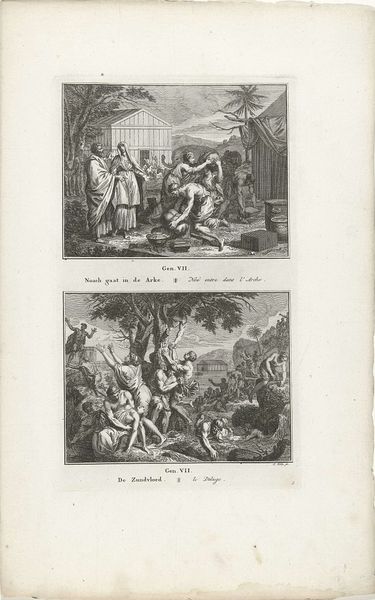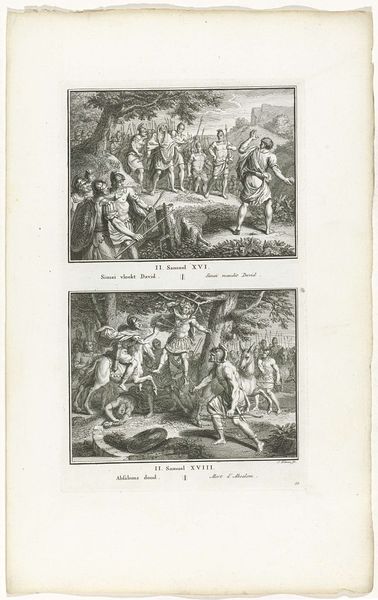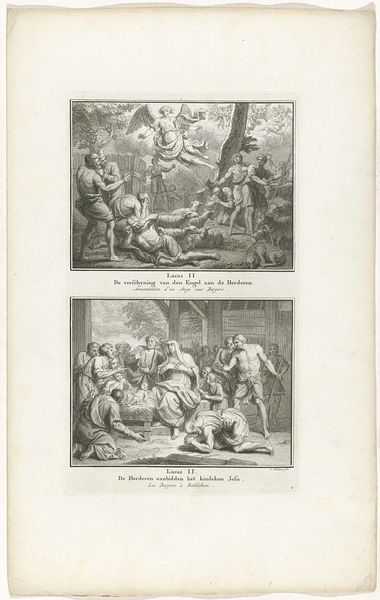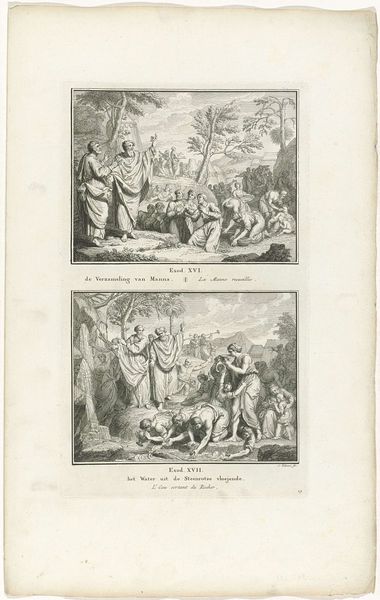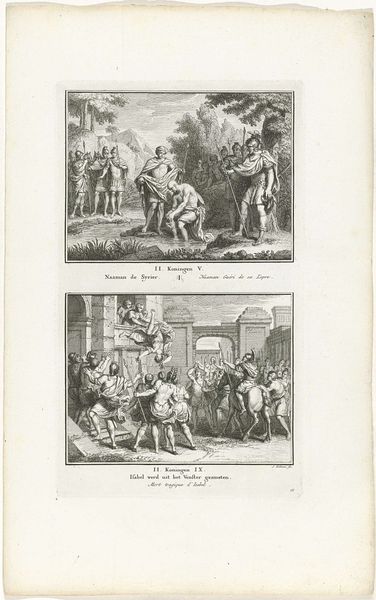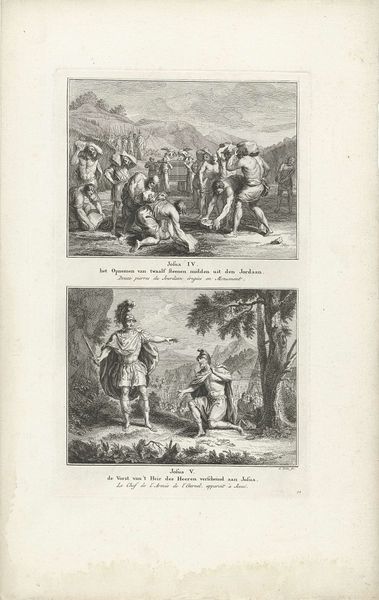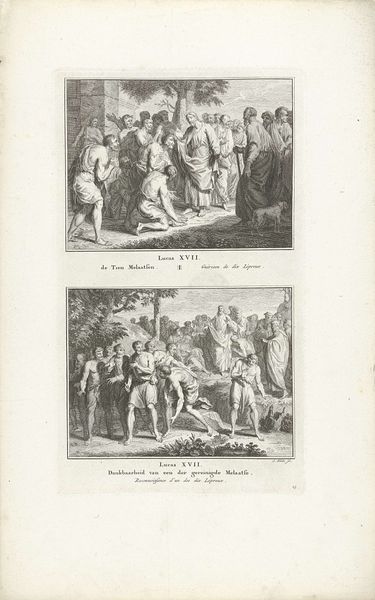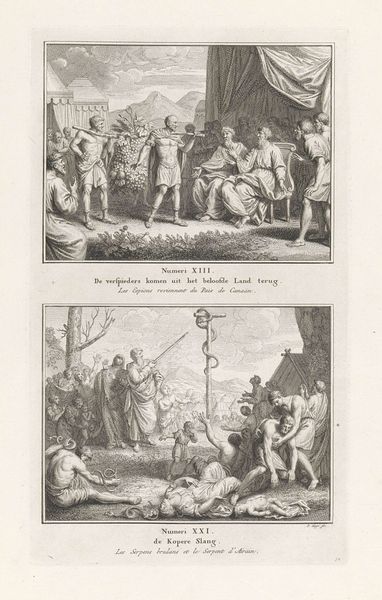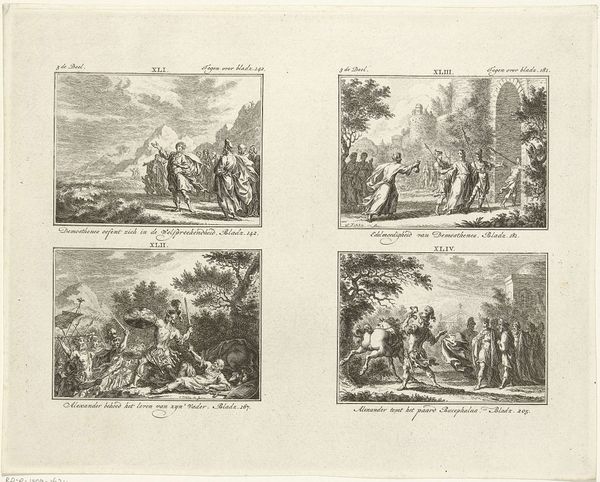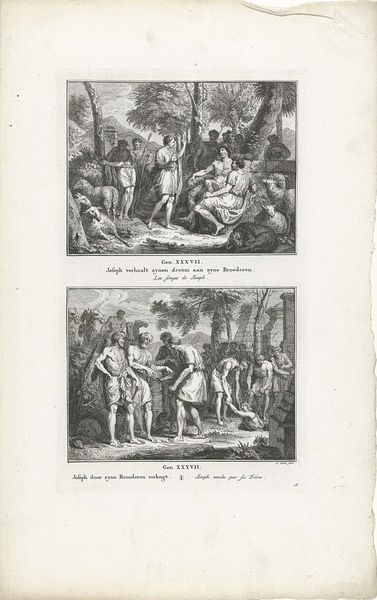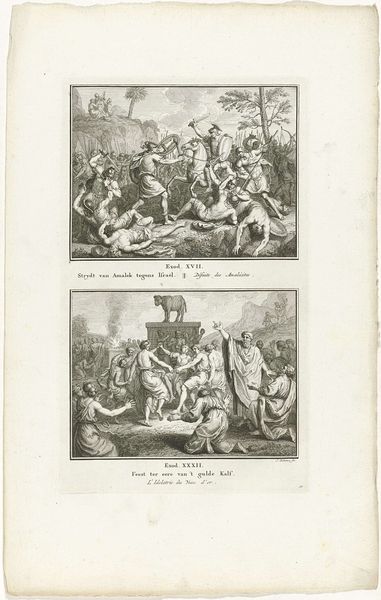
Jozua beveelt de zon en maan om stil te staan en Jozua en de vijf overwonnen koningen 1791
0:00
0:00
Dimensions: height 326 mm, width 194 mm
Copyright: Rijks Museum: Open Domain
Editor: This is "Jozua beveelt de zon en maan om stil te staan en Jozua en de vijf overwonnen koningen," an engraving by Simon Fokke from 1791. It's… intense! The top image is a flurry of limbs and aggression, and below, a grim procession. What kind of a story is this telling? Curator: It’s telling a powerful, public story. The engraving visualizes a pivotal Old Testament moment where Joshua commands the sun and moon to stand still so the Israelites can defeat their enemies. We need to consider how potent biblical narratives were, shaping both moral and national identity in the 18th century. Do you see how Fokke presents Joshua almost as a divinely ordained leader? Editor: Yes, he's so central, even dominating the upper panel through forceful gestures. But the lower panel—what's the political significance of that scene of defeated kings? Curator: Consider it through the lens of power dynamics. Depicting defeated rulers served a didactic purpose, reinforcing the legitimacy and strength of the ruling order and the implied divine favor. These images, often mass-produced, circulated widely, reinforcing particular societal values and power structures. Think of this as a form of visual propaganda. Editor: Propaganda, even then! I hadn’t thought about it like that. So, art served not just an aesthetic purpose, but a very pointed social one. Curator: Precisely! It invites us to critically examine art's role in perpetuating dominant ideologies. What's particularly interesting to observe in the Rijksmuseum is how different periods use similar narratives to communicate often diverging beliefs and values. Editor: That’s a really helpful perspective. Now I understand how to look past the initial image and understand what these depictions meant at the time. Curator: Exactly! We have to think about the cultural context, how artworks operated within and shaped their societies.
Comments
No comments
Be the first to comment and join the conversation on the ultimate creative platform.
